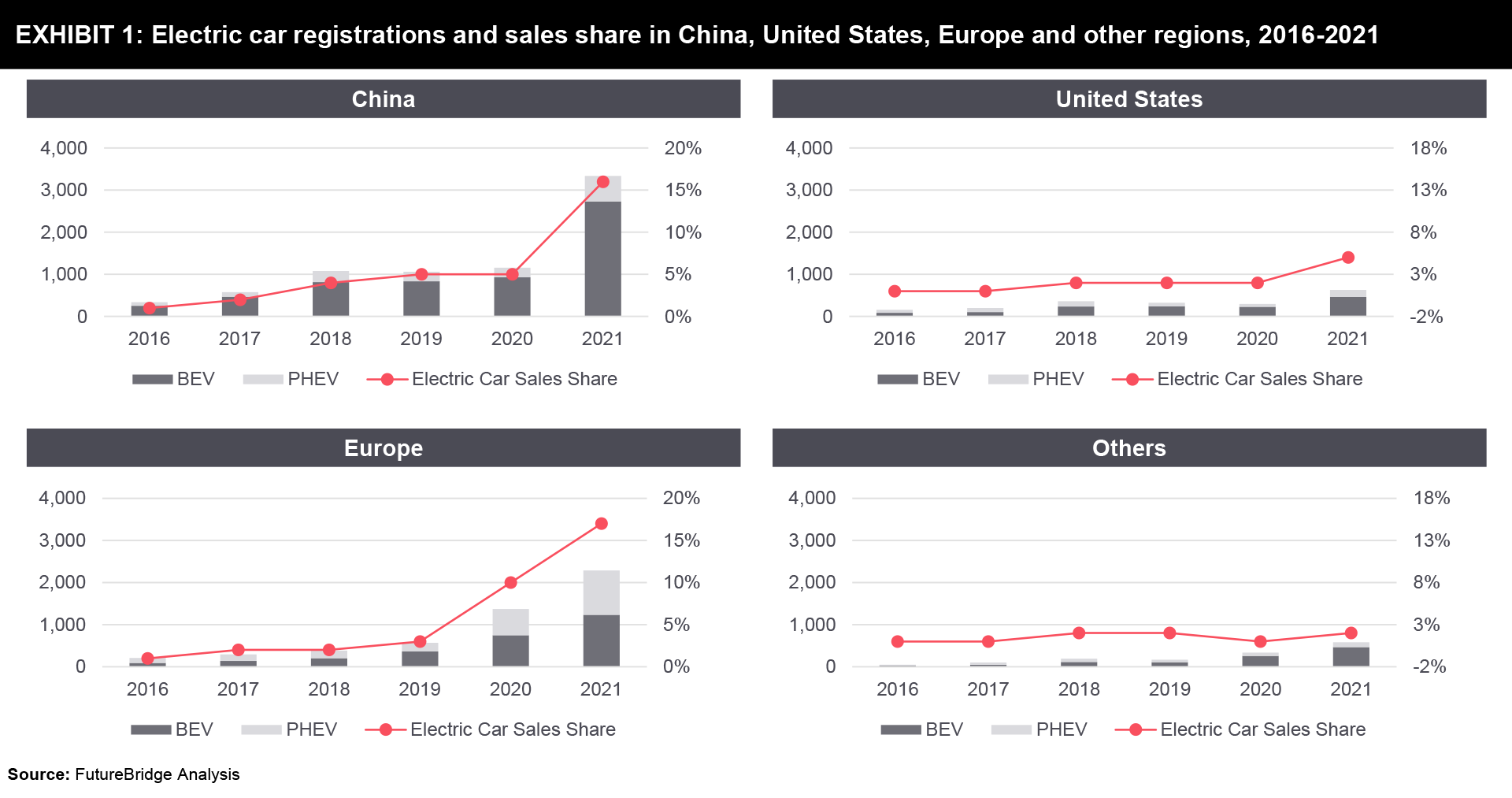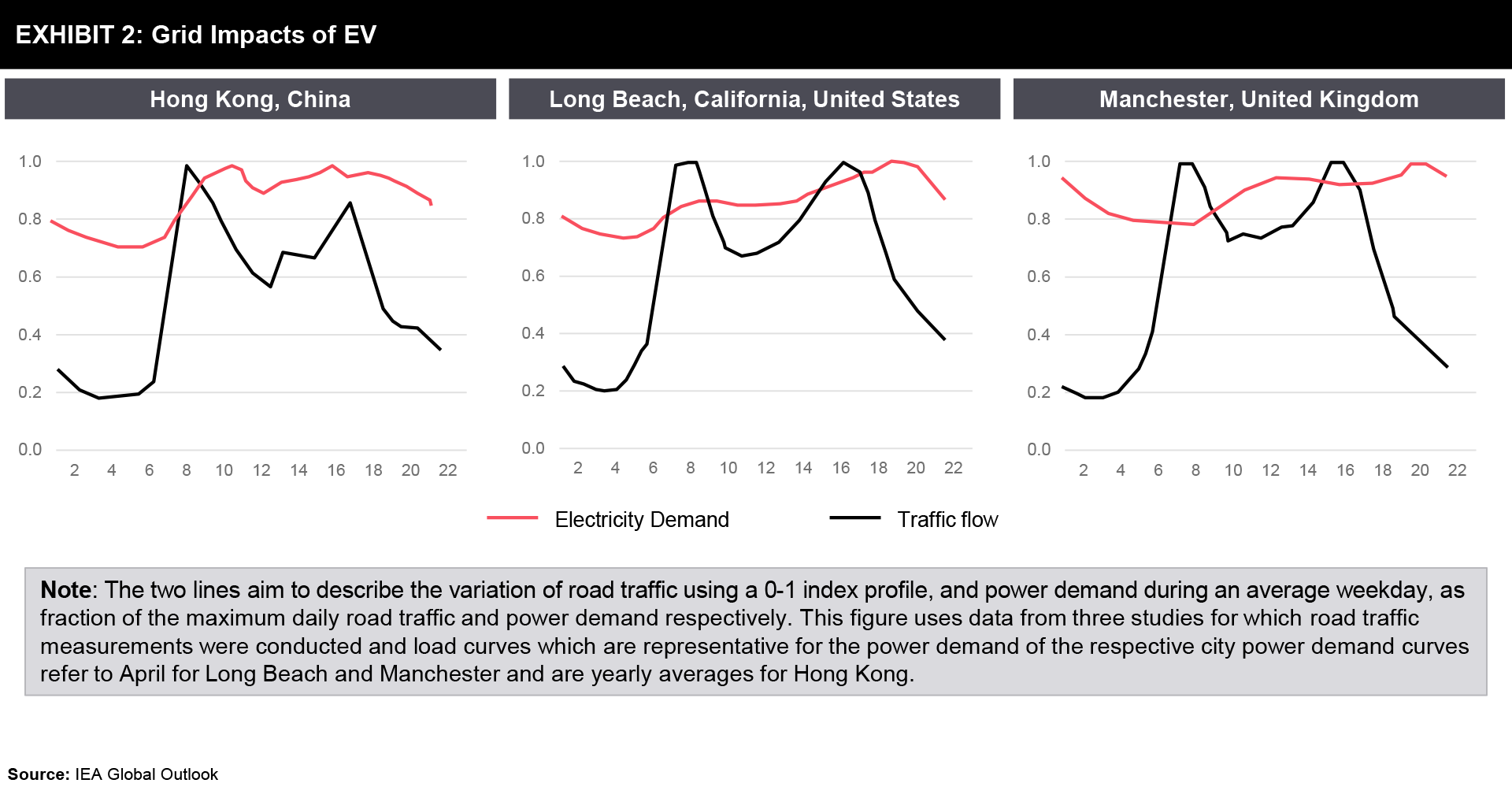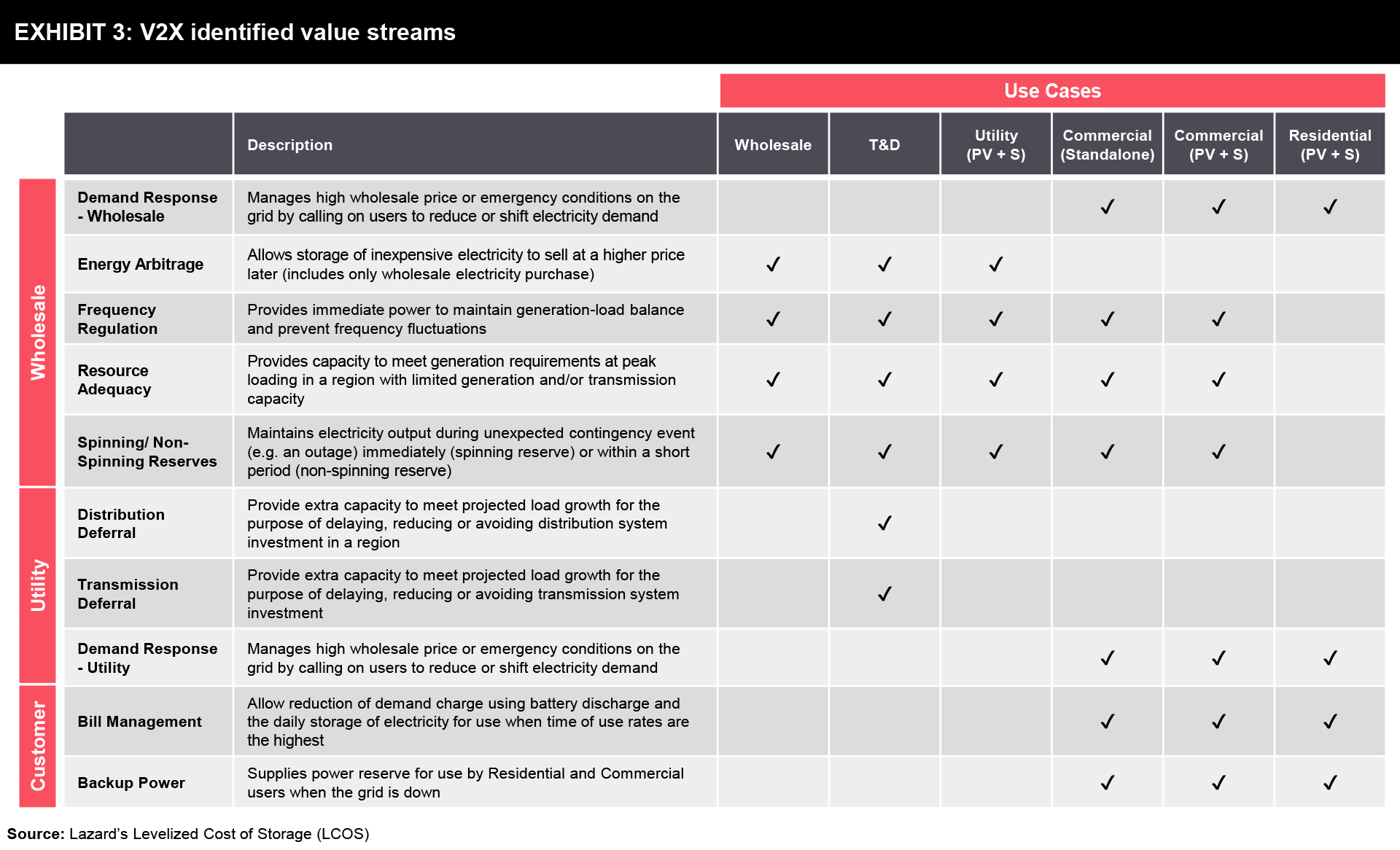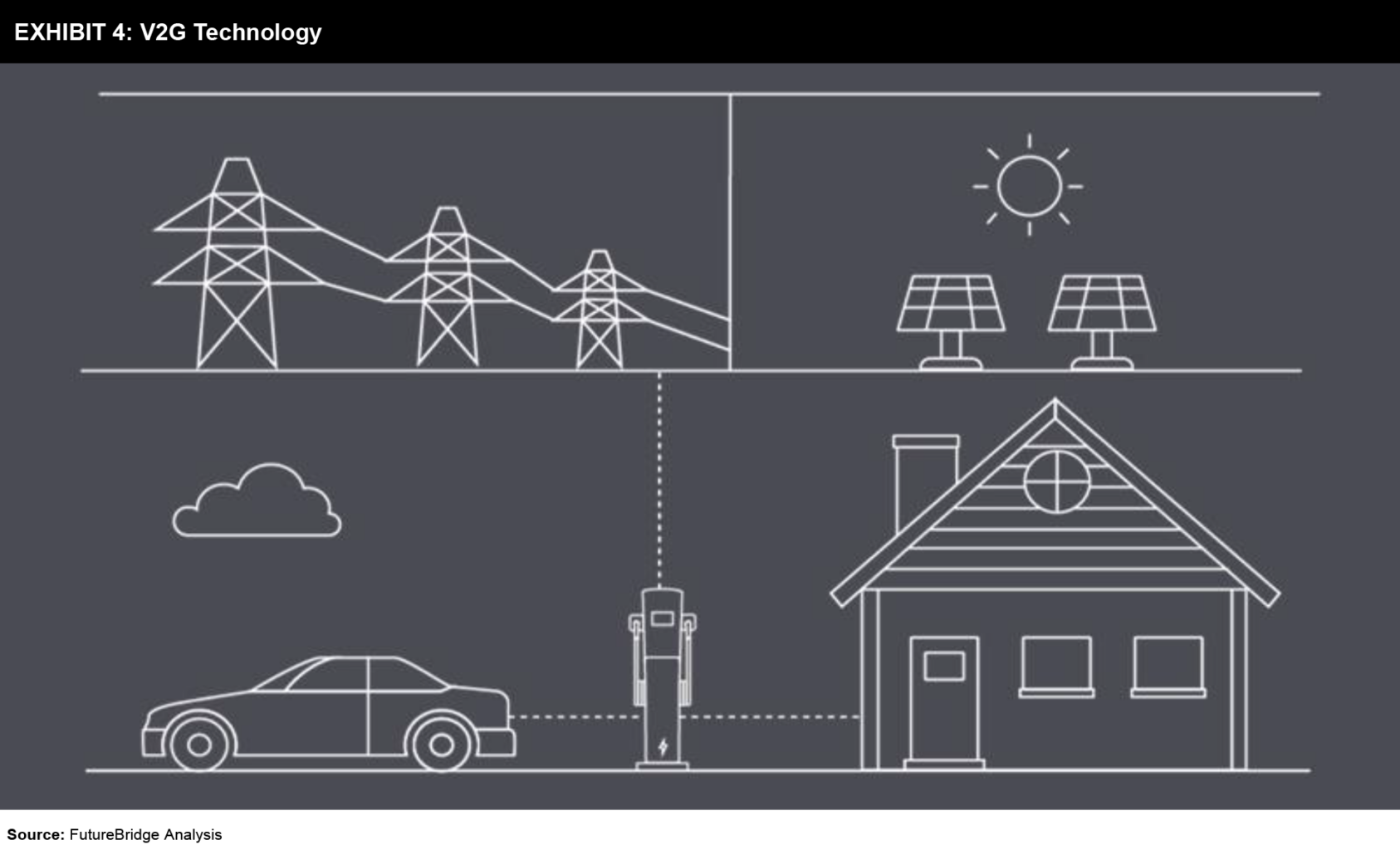Electric vehicles (EVs) present an opportunity to replace fossil fuels in the transportation sector. Electrification of the transportation sector can also increase energy efficiency and reduce local pollution.
Batteries will become more powerful and capable of charging at a faster rate as technology advances, and these advances will also place new demands on electricity networks. As networks become increasingly dominated by renewable energy, particularly intermittent sources like wind and solar PV, further interventions will be required to keep the grid balanced.
The simplest way to deal with this mismatch is to store excess energy – primarily in batteries – when it is generated and then release it when needed. In other words, EVs can be part of the solution to the challenges being created for the grid by operating as a grid asset through vehicle-to-grid (V2G) technology. This allows cars to feed power back into the grid via a bi-directional charger. EVs that operate as grid assets are a powerful weapon in the battle to balance grids and provide frequency-regulation services.
Progress in EV adoption


In 2021, one of every five new vehicles registered in Europe was electric. Accounting for just 1% of the total 326 million vehicles in Europe today, the EV share is estimated to grow to 65 million vehicles by 2030 and double to 130 million vehicles by 2035.
To date, the progress in EV adoption has been linked to government policies that favor EVs to achieve carbon emission reduction goals, including government-funded rebates for EV purchases and funding for EV charging infrastructure. The incoming German coalition, for instance, is targeting 15 million EVs by the end of this decade, effectively prohibiting the sale of ICE vehicles.
In Europe, there are over 374,000 public charging stations. By 2035, Europe’s predicted 130 million EVs would require at least 65 million chargers, 9 million of which will be public and 56 million residential. Charge points will be installed in locations that represent different driver usage needs: at home; at work, or the depot; at a destination where you charge for convenience while engaged, such as shopping or dining; and in public, which includes on-street parking and highways.
Ten European countries do not have a single charger per 100 kilometers of road, while the Netherlands, France, Italy, Germany, and the UK account for 66% of total public charger stock.
Building the charging infrastructure will require fast and affordable access to the grid for charge point operations. Upgrading the local grid infrastructure can be expensive for installations with many chargers or fast charging points. New policies will be needed for locations where Grid Connections or permits for new charging locations can take months or years to process.
Impact of EV charging on the grid


Despite regional differences, total electricity demand in Europe is expected to increase by 1.8% per year by 2030, with an overall growth up to 2.5% globally. EV penetration will account for 10–11% of annual demand growth.
For instance, if each car in the UK would consume an average of 2,114kWh per year. Multiplying that by the number of cars (32,697,408 cars in the UK), you get 69.1TWh. However, the national grid produced 323TWh of power, only 21.4% of the energy it produced for the year. Similarly, if all US cars were EVs, they would need a total of 1,106.6TWh, 27.6% of what the American grid produced in 2020. Therefore, even if there is an overnight increase in EVs, the grid could cope with the increased demand that would accompany it.
However, the unpredictable fluctuations in demand could potentially destabilize and disrupt operations. Therefore, the system will need sufficient generation, storage, and network capacity.
Unmanaged energy demand
Unmanaged charging causes problems primarily at the local grid level, where an increase in demand is likely to cause voltage fluctuations, poor power quality, and power losses.
The alternative is managed charging, which balances EV charging with other grid demands. Grid operators can use digital capabilities to detect loads and smartly adjust EV charging based on demand and the availability of energy supplied by local storage, renewable sources, and the batteries of EVs serving as grid assets.
Investments in digitization and innovation will be equally important to capitalize on emerging technologies that will alleviate the challenges of EVs. Smart EV charging and energy management technologies are examples of technologies utilities can leverage to help manage charging, balance grid loads, and transform EVs from a grid liability to a grid asset.
Balancing the load with managed EV charging
Offering managed smart EV charging services to residential and commercial customers is certainly a way that utilities can capitalize on the EV revolution while protecting the grid. Whether or not utilities own and operate EV charging infrastructure, smart charging and energy management will benefit them.
Smart EV charging uses chargers communicating with a management platform via a data connection. The management platform uses a demand-response solution to direct charging so that it occurs when the grid load is lower – for example, in the early morning hours for home and fleet depot charging. The same approach can balance the power flow between chargers at a workplace or destination where cars are parked for relatively long periods to avoid grid overload during peak energy use. These capabilities are already available and in use.
That is one method of balancing the grid’s load. Another option is pricing to influence when customers charge their EVs, which can be self-managed or integrated with managed smart EV charging.
Leveraging EVs as grid assets
Utilities will play a critical role in turning EVs into energy storage assets that can return power to the grid when needed for grid balancing and boosting grid reliability and stability. In the future, the batteries in millions of EVs can become an integral component of a renewable energy ecosystem. When wind and sun are plentiful, excess clean energy can be stored in the batteries of EVs parked and connected to smart chargers. Most cars are parked 95% of the time, making EVs ideal flexibility assets for the grid. Stored energy is discharged from EV batteries at peak demand or when renewable energy availability is reduced.


Vehicle-to-everything (V2X) is an umbrella term to explain the use of EV batteries to provide energy services and derive additional value from the battery asset when not in use. V2X aims to generate revenue from the battery through dynamic or bi-directional charge control to benefit the electric grid and help reduce/flatten peak energy consumption.
V2X, or vehicle-to-grid (V2G), is the enabling technology for converting EVs into grid assets. It enables bi-directional charging and two-way energy flow between EVs, smart chargers, and the grid. The smart charging system acts as a broker for the EV and the grid, streamlining the removal of energy from the battery supply when needed by the grid and replacing that borrowed energy when demand falls. The data generated by V2G activities are valuable to utilities and grid operators, who can use it to understand driver behavior better and forecast long-term energy requirements.
V2G is still an emerging technology, and certain challenges must be resolved before it can be widely adopted. The long-term effects of V2G activities on EV battery life are unknown, and EV owners’ concern about the impact is a deterrent. EV owners may be concerned about the data collected about their driving and charging habits and will need assurance that their privacy is protected.
While drivers must be reassured and persuaded to participate in the EV ecosystem, the other key players in the value chain are also critical to its long-term success. V2G hardware support must be provided by vehicle and charger manufacturers. Operators of EV charging infrastructure must adopt V2G standards such as the ISO 15118 protocol and invest in chargers with two-way transmission capabilities.


Conclusion
Worldwide support for clean transportation options has promoted awareness, increased charging opportunities, and facilitated EV adoption. EV success is increasing rapidly, and global automakers are committing more than $140 billion to transportation electrification.
The residential, commercial, and industrial sectors will contribute to electricity demand growth, but the largest contribution will be from the transportation sector. In this sector, EV penetration will see electricity demand growth accelerate by 11% per year, adding 200TWh by the end of this decade.
When the number of EVs increases, total load demand increases, and voltage decreases steadily but simultaneously. Under an unmanaged charging scenario, high penetration of EVs could violate voltage boundaries and disrupt the security of the power network. If demand is not managed, the problems will perpetuate.
Infrastructure reinforcement might seem like an obvious answer to managing the impact of EV charging on distribution grids, but it may not be the most efficient solution. Of course, the unpredictable EV burden is not the only challenge for grid operators; they are also dealing with the introduction of heat pumps and electrification of buildings and the industry.
One way to manage energy demand is Smart charging. It works by connecting EVs to a charger that provides, via a data connection, information about the cheapest time to charge. Charging follows the load-demand curve, so EVs are charged during low-demand hours. Another way is to use pricing to influence when customers charge their EVs, which can be self-managed or integrated with managed smart EV charging.
Utilities play a critical role in turning EVs into energy storage assets that can return power to the grid when it is needed for grid balancing and boosting grid reliability and stability. V2G, or vehicle-to-grid, is the enabling technology for converting EVs into grid assets.
To support the transition of EVs to grid assets, utilities and grid operators must address the following key challenges:
- Use data to forecast future needs and invest in grid upgrades over the medium and long term to ensure cost-efficiency and optimal asset utilization.
- Implement smart technologies for communication, metering, grid status monitoring, and operations as part of active system management.
- Implement control technologies, cybersecurity, and digitization to improve grid stability, data management, security, and privacy.
- Provide real-time status awareness and control over a wide range of behind-the-meter energy sources, including EVs and passive solar, to enable grid services.
- Invest in peak-shaving technologies and high-tech electricity storage, such as EV batteries, large battery arrays, and thermal storage systems.
- Develop local flexibility markets, demand response programmes, and energy-efficiency initiatives.
- Smart asset management entails creating advanced asset management strategies, tools, and methods to mitigate asset risk.
As the momentum for EV adoption grows, utilities and local distribution grid operators must understand what the local grid will need to support EV charging infrastructure and ensure systems can handle the load from managed EV charging. It is also time to start designing and building the two-way infrastructure required to convert EVs into grid assets.
The goal is to create an ecosystem that connects transportation and energy, increases the use of renewable energy and reduces carbon emissions for the sake of the planet’s health.
References
- The Future of Electric Vehicles and Material Resources: A Foresight Brief
- Impact of Electric Vehicle Charging Station Load on Distribution Network
- Power sector accelerating e-mobility
- Additional energy demand of EVs by type in the case of unmanaged charging
- Load Balancing for EVs
- Vehicle to Grid (V2G): A Key to Smart Energy Management
- Lazard’s Levelized Cost of Storage Analysis—Version 4.0
How do you track techno-commercial trends impacting & shaping the Future of Energy? Start a trial of Energy Insider – a platform that provides actionable insights on technologies, products, IP, markets & regulations.
Need a thought partner?
Share your focus area or question to engage with our Analysts through the Business Objectives service.
Submit My Business ObjectiveOur Clients
Our long-standing clients include some of the worlds leading brands and forward-thinking corporations.
- © 2021 Cheers Interactive (India) Private Limited. All rights reserved. FutureBridge ® is a registered trademark of Cheers Interactive (India) Private Limited.




































